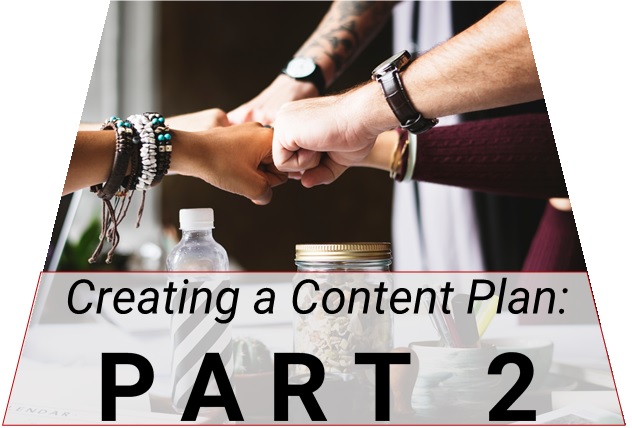 Last time we discussed getting your content marketing campaign off the ground. We gave you the tools on how to get your strategy in motion. In this round, we will discuss how to get the momentum going and touch on auditing your current content, documenting your new content strategy and how to create topic ideas to fuel your content strategy.
Last time we discussed getting your content marketing campaign off the ground. We gave you the tools on how to get your strategy in motion. In this round, we will discuss how to get the momentum going and touch on auditing your current content, documenting your new content strategy and how to create topic ideas to fuel your content strategy.
Part 2 of 4: Getting things in order
Week four: audit
Audit your content. I know, you are scratching your head saying, what does that mean? Basically you need to determine what kinds of content you currently offer on your website and social media accounts and decide just how effective they are for you and your marketing strategies.
You need to look at things like, do they have common themes and formats? How often are you producing new content? Who is producing that content? Is it current? Helpful? Educational?
Then decide if this content is at all successful. You might be thinking, how do I do that? One way is to use Google Analytics to track page visits, bounce rates, downloads and other conversions, or better yet, use a tracking tool like marketing automation platforms. Then decide if you are following best SEO practices on your key pages and blog posts. Finally, look at what your competitors are doing with their content.
Some action items this week to consider, include:
- Identifying gaps or opportunities for you to create new content that could give your company a competitive edge
- Identify pages that have outdated information or could use a redesign
- Determine which pages are really working for you based on tracking data
These few items should help move you in the right direction.
Week five: document
Start documenting your new content strategy. Sounds silly, right? It’s not. And here’s why. Remember, we are trying to revamp your content marketing strategy in just three months! Keeping a short and sweet living document of what you are doing will help you obtain your goal faster and easier. This document is something that should be easy to follow and referred to by anyone who is on your team, keeping everyone on the same page.
The document should have your goals and how you plan to reach them. Revisit what you had written in week two and see if your goals are still on point and attainable. It should list your target audience. Again, look to your past to see where you need to go in the future. Select 2-4 target groups and describe the content they are looking for, especially the language they use to research those topics.
Finally talk to your content kings and queens and remind them again of what is expected of them to help achieve your collective goal. Look at your competitors and see where you stack up. What is your content type? What is your format? Stick with what works and what is in the budget. Don’t forget content distribution. Pick 3 – 6 places where you want to publish your content. The very first should be your company website, then social media sites and everything else should fall in behind that.
Week six: brainstorm
Time to brainstorm. That’s right, start conjuring up ideas that match who you are targeting in your already established business goals. Determine what obstacles and roadblocks your customers face. This can be done by speaking with them directly or those on your team who deal with them day in and day out. These obstacle and roadblock tidbits generally turn into great stories.
This next tip is going to seem so obvious, you are going to say, why didn’t I think of that? Do a keyword search in Google AdWords, wordtracker or answerthepublic.com. These are great places to develop ideas on what people are talking about, inquiring about or need more information about. Look for content gap opportunities (the things that no one is writing about, where no content can be found) on search engine pages and fill those pages with content that you write. Be the expert! It can be as simple as changing the term used by you as the manufacturer to one the customer uses in their application instead.
If all goes according to plan, by the end of week six you should be able to:
- Create a content matrix for each of your target audiences
- Create an idea chart (be it hardcopy or digital) that helps encourage you content kings and queens to submit any content ideas they may have onto this board at their leisure (of course with some urgency)
- Turn those ideas into headlines
Coming up in the next 3 weeks, we will review creating a content calendar based on priorities and ‘low hanging fruit’, fine tuning SEO and reviewing and editing your first piece of content.
Happy planning!
